The National Steinbeck Center in Salinas, California is the largest and finest interpretive center in the country devoted to an American author. Clay was the featured speaker at Center’s 25th anniversary and wrangled a rare visit inside Steinbeck’s famous rig.
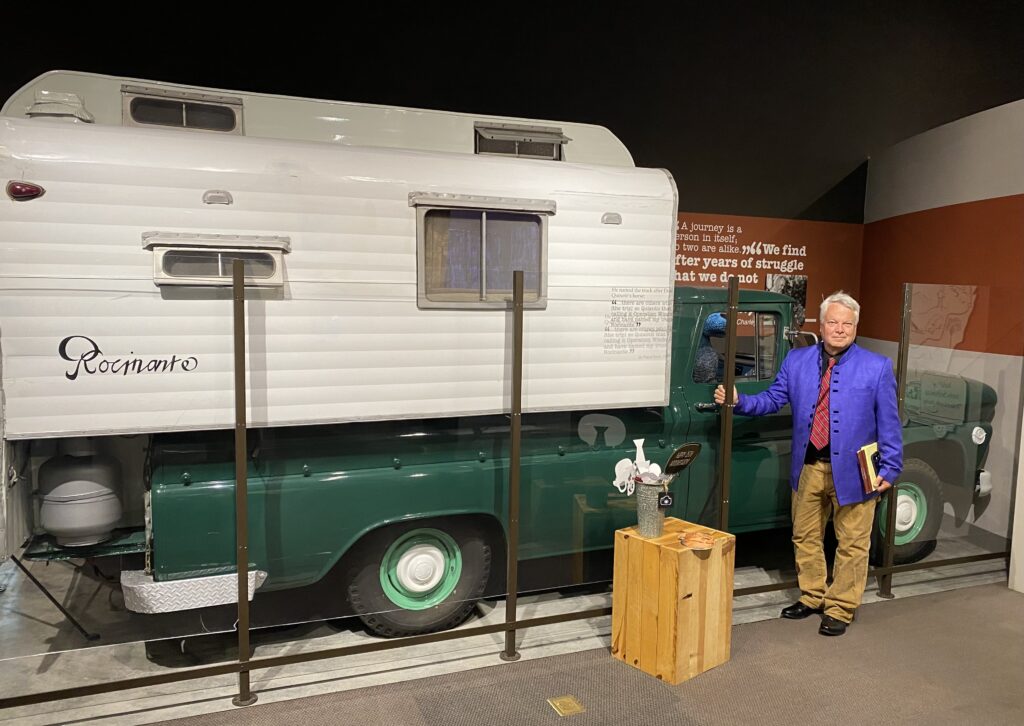
My life has slipped into a John Steinbeck phase. In the spring of 2024, I’ll be retracing Steinbeck’s 1960 Travels with Charley road trip around America. I have my Airstream (23-foot Flying Cloud) and my old GMC pickup.
I’m also working on a Steinbeck book project — his attempt late in life to translate the Middle English classic Morte d’Arthur (the legendary tales of King Arthur) into a slightly archaized modern English. Steinbeck couldn’t complete the grand project, partly because his health was in severe decline but partly because he could not find the “voice” he needed to keep the charm of the 1485 original alive.

I was delighted, therefore, to be asked to deliver the banquet address at the National Steinbeck Center in Salinas on the occasion of the Center’s 25th birthday. The Steinbeck Center is the largest and finest interpretive center in the country devoted exclusively to an American author. The folks here asked me to talk about my Travels with Charley project. I spoke of this last American journey as a grail quest of Arthurian magnitude. At 58, Steinbeck felt he had lost touch with the American people and what he called “this monster land.” He believed that he had lost his creative mojo. Part of him bought in with the assessment of some prominent critics that his best work was now decades behind him. He wanted to prove that he was still a great writer and a man of virility, capable of traveling the country solo in a heavy rig without power steering.
In some respects, Steinbeck failed to achieve the grail in the autumn of 1960. He was more dependent on his third wife, Elaine, than he liked to admit. Sometimes, it feels like his heart was not really in the great adventure. He rushed from one rendezvous with Elaine to the next. And he lost interest in the journey at the three-quarters mark, at New Orleans, and then throttled home looking neither left nor right and sleeping only long enough to keep going.
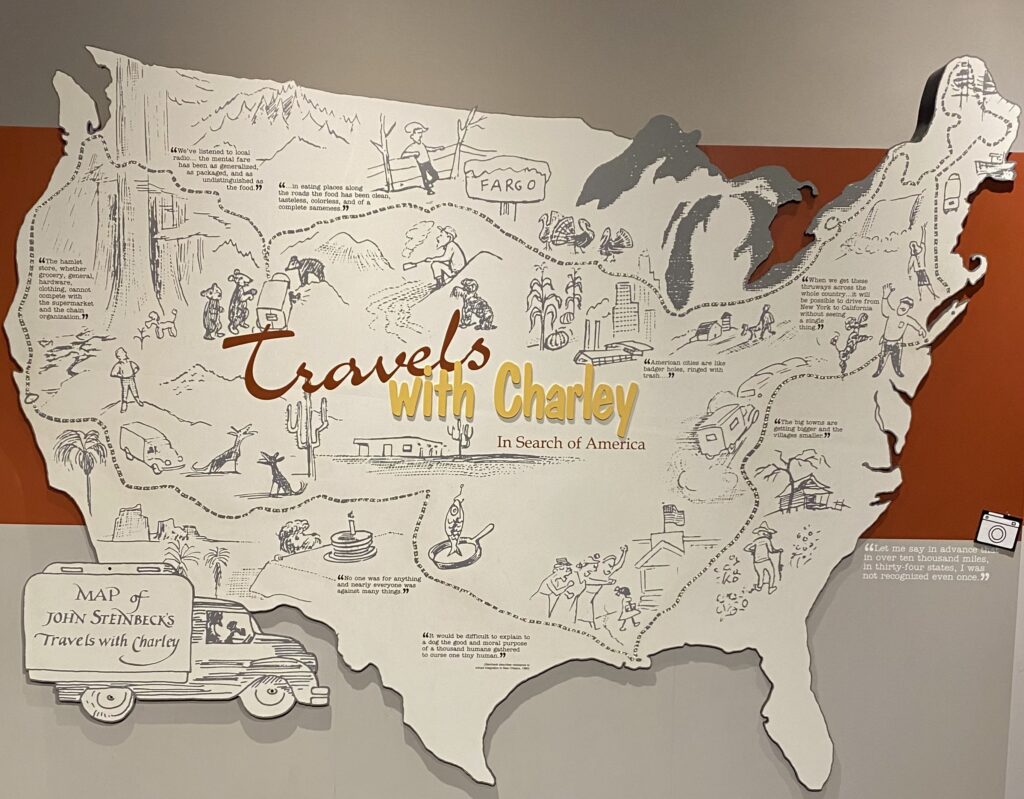
And yet, the book he wrote, Travels with Charley in Search of America, is widely regarded as one of his best books. Many say it is their favorite Steinbeck book — a paradox. I’ll have much more to say about this as I thread my way around America in the next 18 months. I can hardly wait.
I explained to the folks celebrating the Steinbeck Center’s first 25 years that I’m going to use the Travels with Charley itinerary as a framework, a metaphor, for my own journey in search of the meaning of America as we reach our 250th birthday, July 4, 2026. I want to listen to the voices of America as this anniversary approaches, to see for myself whether the national divisions are as deep and threatening as they sometimes seem. Are we now one country or two (or more)? Do we still share a national narrative, what might be called an American Mythology? Are we coming apart? Can we heal? What values do we still share in this disillusioned time?
I’ll report back to you from the road: video interviews, dispatches, reviews of books by Steinbeck and others, an interactive map, and much more. Stay tuned.
But I am burying the lead of this story!
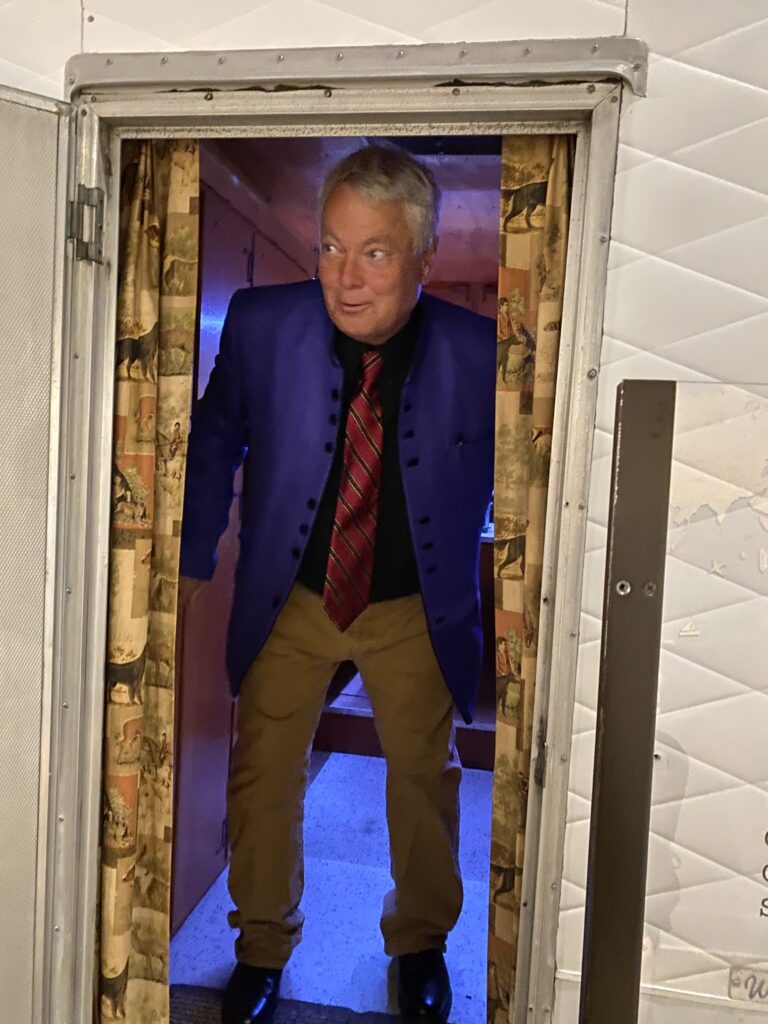
For several years, I have explained to the staff of the Steinbeck Center that I would give anything to spend 15 minutes in Steinbeck’s Rocinante, the truck camper he drove 10,000 miles around the country. The ¾ ton green pickup is at the heart of the interpretive center, carrying the camper unit he commissioned to serve him like “the cabin of a boat.” The Center staff has always said no to my request, in no uncertain terms, leaving no room for negotiation. The fact is that I have never really expected to get into Rocinante. I agree that it is a secular relic that must be protected from the wear and tear of curious humans; its potency is enhanced by its untouchability, and no one should have access to it. And yet … one can dream.
After my banquet remarks, Lisa, the archivist, came over to my table and whispered that they had decided to give me a bit of time in the rig. I wanted to say, “How dare you let some nimrod like me get into that thing!?” But I suppressed that thought and followed breathlessly and tremblingly to the Travels with Charley bay of the museum.
I had a full 20 minutes alone in the camper. It was essentially like any pickup camper, except that the cabinetry was 1960 brown veneer, and the chemical toilet was alarming. I sat at the table where Steinbeck sat, fingers on a black portable typewriter next to a kerosine lamp he bought during his first week on the road. One of America’s greatest writers sat where I was now sitting, the winner of the 1940 Pulitzer Prize and the Nobel Prize for Literature in 1962. The author of Of Mice and Men and The Grapes of Wrath sat, ate, drank, talked, entertained, wrote, and slept in this small space. I could imagine the poodle Charley draping himself around Steinbeck’s long legs under the table.
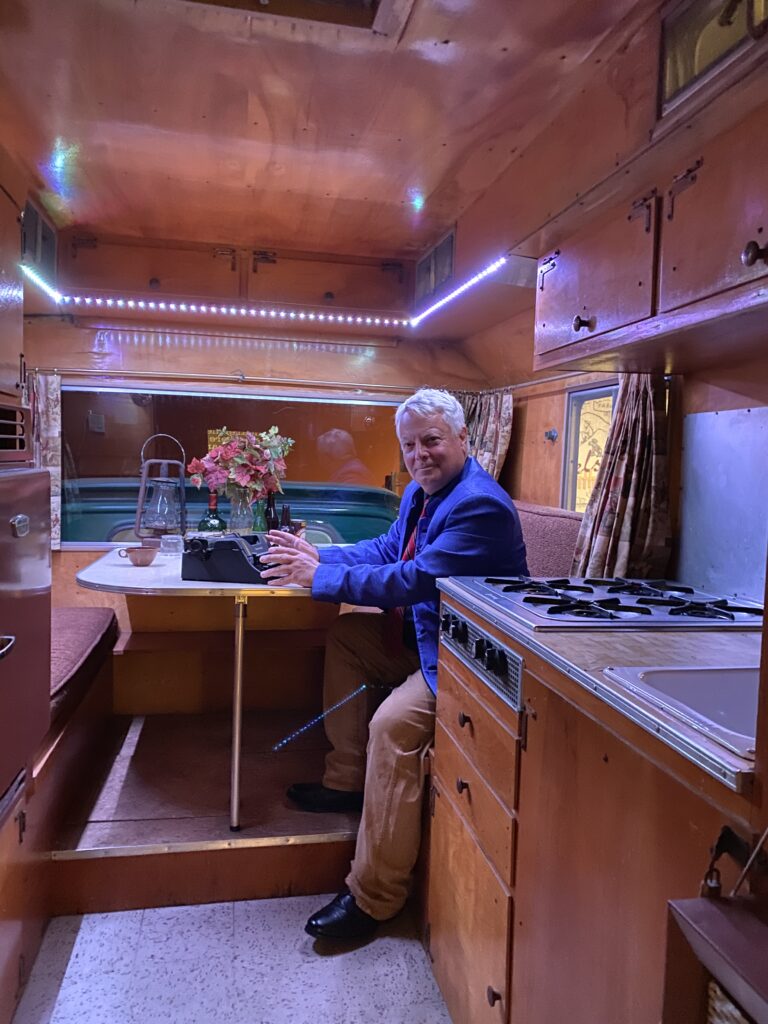
It was a heavenly moment, one of the supreme moments of my life — as when I stood in the pulpit at Lincoln’s Inn in London where John Donne preached metaphysical sermons in the early 17th century, as when I got to hold in my hands a first edition of Sir Walter Raleigh’s History of the World, as when I watched Hamlet at the Globe Theatre in London. I tried to bristle every nerve cell and limb and ratchet up my consciousness to be fully present for this unbelievable honor. I was in Steinbeck’s rig!
All too soon, I climbed down so the staff could button it up and go home for some well-deserved rest. When I was back on terra firma, I said two things:
First, you must never let any other human being under any circumstances sit in this rig, no matter what, ever again!! Second, I promise never to divulge that I have had this honor.
They laughed and said, make sure you tell your readers that you have to give the annual banquet speech even to be permitted to dream of getting into Rocinante, and only in leap years. And by all means, publish the photos on your website!
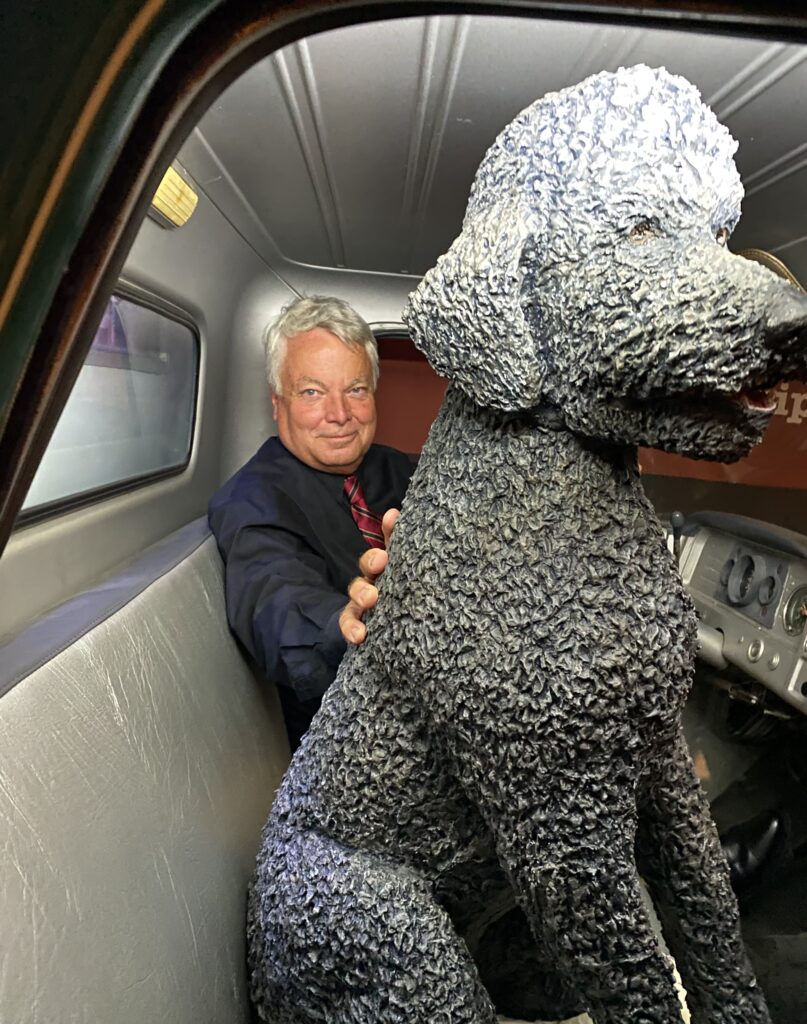
The day before the banquet in Salinas, my friend Russ and I spent time with Lisa Josephs in the archives on the lower floor. She showed us some treasures from their collection. Unfortunately, Russ had to leave before the banquet to attend a family event in North Carolina. As he left, he said that when you have heard one Clay Jenkinson talk, you have pretty much heard them all. Ouch.
But the story does not end in Salinas, Steinbeck’s hometown, where the family’s lovely Victorian home is now a museum and a restaurant. I went on to Palo Alto.
While I was in Palo Alto, I spent two days in the Special Collections room of the Stanford University Library, where I examined Steinbeck’s papers relating to his Morte d’Arthur project, his Travels with Charley journey, and more than a hundred previously unpublished photographs. Fortunately, in this digital era, you can take photo scans of documents on site, to study leisurely back in your zip code. The Stanford Special Collections librarians (Tim, Lydia, and Leif) were extraordinarily welcoming and generous. They went way out of their way to fetch some document boxes on short notice (for day two), and Tim even brought me several items to examine that I would not otherwise have seen.
And finally, I had the honor of spending an hour interviewing Stanford English professor Gavin Jones, the author of Reclaiming John Steinbeck: Writing for the Future of Humanity (2021). I’ll have more to say about Jones’ brilliance and insights in the months ahead. My goal is to interview every Steinbeck scholar in the country. And then to present the best of those interviews to you — down the road.
Now I am home briefly, and tomorrow I take my own Rocinante out to the North Dakota badlands for a week, round two of my shakedown journeys pulling the Airstream. At my Airstream dining table, I’m going to try to finish my chapter (for the Morte book) on John F. Kennedy, the Arthurian Myth, and John Steinbeck.
The countdown for the great 2024 Travels with Charley tour has begun. Stay tuned.
Photos by Dennis Mckenna.
